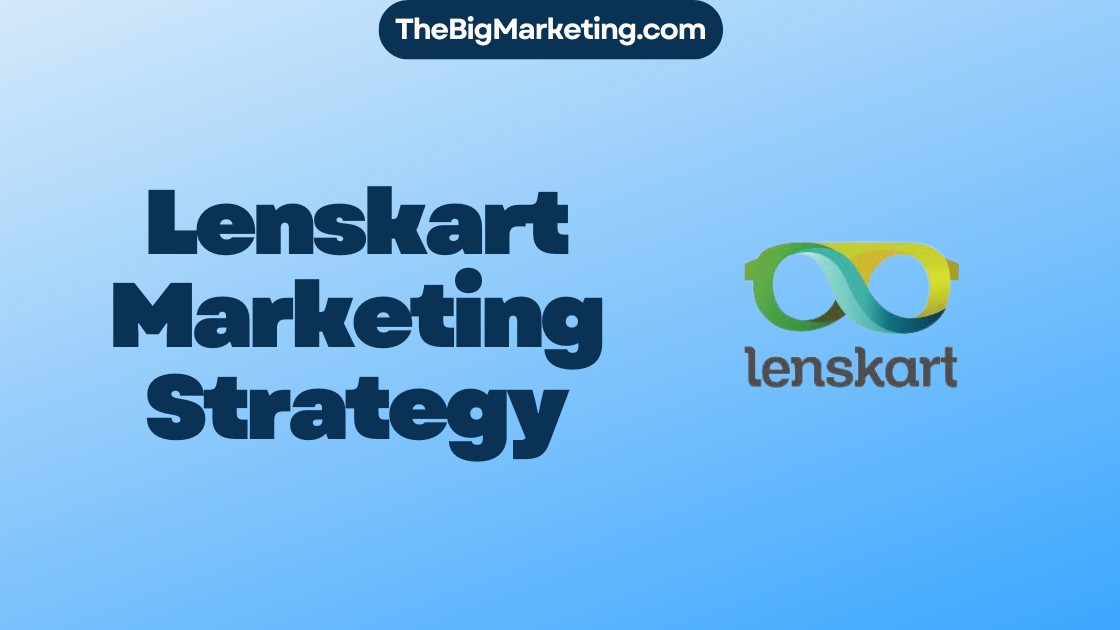Utility in marketing refers to the specific value realized by consumers when they spend on products or services. Time utility is one of the common types of utility in marketing. It focuses on the availability of products when customers want them and the timely delivery of products. Time utility also takes into account seasonal changes in purchasing habits. Companies need to ensure that their products are in-stock and delivered on-time to meet consumer expectations and capture consumer conversion on-demand.
Key Takeaways:
- Time utility is a type of utility in marketing that focuses on the availability and timely delivery of products.
- Companies need to ensure that their products are in-stock and delivered on-time to meet consumer expectations.
- Time utility takes into account seasonal changes in purchasing habits.
- Maximizing time utility can help capture consumer conversion on-demand.
- Understanding and incorporating time utility into marketing strategies can lead to increased sales and improved brand loyalty.
Why Does Marketing Utility Matter?
Marketing utility plays a crucial role in today’s competitive business landscape. It encompasses various strategies and concepts that help companies better understand consumer behavior and design effective marketing campaigns. One of the key components of marketing utility is the concept of time utility.
Traditionally, marketing efforts focused on making a lasting impression on consumers. However, with the oversaturation of advertisements in today’s digital age, consumers have become more discerning and value-driven in their buying decisions. This is where the marketing time utility concept comes into play.
Marketing time utility refers to the importance of delivering products or services when consumers need them the most. By understanding consumer preferences and buying habits, companies can optimize their operations to ensure timely delivery and availability of products. This not only enhances customer satisfaction but also increases the likelihood of conversion and repeat business.
But why does marketing utility, specifically time utility, matter?
Importance of Time Utility in Marketing
The importance of time utility in marketing cannot be overstated. By focusing on delivering products or services at the right time, companies can:
- Meet consumer expectations: When customers want a specific product, they expect it to be readily available. By offering timely delivery and availability, companies can meet these expectations, enhancing customer satisfaction and loyalty.
- Drive customer conversion: Time utility enables companies to capture consumer conversion on-demand. By ensuring quick and hassle-free delivery, businesses can maximize their chances of converting interested consumers into paying customers.
- Increase brand loyalty: Utility-driven marketing not only provides functional and useful products or services but also creates a stronger bond between customers and companies. By consistently delivering value and meeting customer needs, companies can foster long-term brand loyalty.
Overall, marketing utility, particularly time utility, is essential for companies looking to thrive in today’s competitive market. By understanding consumer preferences, optimizing supply chains, and implementing effective delivery strategies, businesses can enhance customer satisfaction, increase conversion rates, and build a strong brand presence.
Examples of Marketing Time Utility
To illustrate the importance of time utility in marketing, let’s consider a couple of examples:
| Example | Explanation |
|---|---|
| E-commerce | In the world of online shopping, fast delivery has become a top priority for consumers. E-commerce giants like Amazon have revolutionized the retail industry by offering convenient and speedy delivery options. By providing time utility, they have gained a competitive advantage and built a loyal customer base. |
| Food Delivery Services | The rise of food delivery services like Uber Eats and DoorDash can be attributed to their ability to provide time utility. Consumers can now enjoy their favorite meals from local restaurants delivered right to their doorstep in a timely manner. This convenience and efficiency contribute to customer satisfaction and repeat business. |
The Five Types of Utility in Marketing
Utility in marketing is a concept that encompasses various dimensions, each contributing to the overall value customers derive from a product or service. Understanding these different types of utility is crucial for effective marketing strategies. The five common types of utility in marketing are time utility, place utility, possession utility, form utility, and information utility.
Time utility
Time utility in marketing refers to the availability of products when customers want them and the timely delivery of products. By focusing on time utility strategies in marketing, companies can ensure that their products are readily accessible to customers, leading to increased customer satisfaction and conversions. Effective inventory management and delivery systems are essential for maximizing time utility benefits in marketing.
Place utility
Place utility ensures that products are available in the locations where customers want them. It involves understanding customer preferences and strategically placing products in physical stores or optimizing online platforms for convenient access. By leveraging place utility, companies can attract customers by offering convenient and accessible purchasing options.
Possession utility
Possession utility refers to the usefulness and satisfaction customers derive from owning a product. It highlights the connection between product possession and the benefits it brings. By emphasizing the practicality of owning a product and its impact on customers’ lives, companies can enhance possession utility and drive customer engagement and loyalty.
Form utility
Form utility relates to the value customers receive from products that meet their specific needs or preferences. It involves understanding customer desires and developing products that align with those preferences. Companies can increase form utility by offering a wide range of product options or tailored solutions, providing customers with more choices and enhancing their overall satisfaction.
Information utility
Information utility refers to the data and information provided to customers that help them make informed buying decisions. This includes product details, specifications, reviews, and other relevant information that empowers customers to make choices based on their needs and preferences. By delivering accurate and comprehensive information, companies can enhance information utility and build trust with customers.
Understanding and leveraging these five types of utility in marketing can deliver numerous benefits, including increased customer satisfaction, improved conversion rates, and enhanced brand loyalty. Companies that prioritize time utility strategies in marketing can meet customer demands, drive customer value, and gain a competitive edge in today’s dynamic marketplace.
Utility of Time
Time utility plays a vital role in maximizing the effectiveness of marketing efforts. It revolves around the core principle of making products available to customers exactly when they want them. By ensuring quick and hassle-free delivery, companies can capture consumer conversion on-demand and meet their expectations.
It’s important to note that time utility also takes into account seasonal changes in purchasing habits. For instance, during the winter season, products like boots and gloves witness high demand, while ice cream experiences increased demand in the summer. Companies that can effectively manage their inventory and delivery systems can cater to these seasonal variations, maximizing time utility.
To illustrate the significance of time utility in marketing, consider a scenario where a customer urgently needs a certain product. If a company can deliver the product promptly, it enhances the customer experience and increases the chances of making a sale. On the other hand, if the company fails to provide the product in a timely manner, the customer may turn to a competitor. Therefore, by prioritizing time utility, companies can gain a competitive edge and improve customer satisfaction.
To ensure maximum time utility, companies can implement strategies such as streamlining their inventory management, establishing efficient logistics networks, and leveraging technology to expedite order fulfillment. By doing so, they not only meet customers’ immediate needs but also lay the foundation for long-term customer loyalty and retention.
Benefits of Maximizing Time Utility in Marketing
- Enhanced customer satisfaction: By delivering products promptly, companies can exceed customer expectations and create a positive impression.
- Increased customer loyalty: When customers consistently receive products on time, they are more likely to develop trust and loyalty towards the brand.
- Improved brand reputation: Companies known for their efficient and timely service build a strong reputation in the market, attracting more customers and opportunities for growth.
- Competitive advantage: By offering superior time utility compared to competitors, companies can differentiate themselves and gain a competitive edge.
- Higher conversion rates: When products are readily available and delivered in a timely manner, customers are more inclined to make a purchase, increasing conversion rates.
Utility of Place
When it comes to marketing, place utility plays a crucial role in meeting the demands and expectations of consumers. Place utility refers to the ability of customers to access products or services exactly where they want them. Traditionally associated with brick-and-mortar stores, place utility now extends to online retailers as well, highlighting the importance of a seamless buying experience across various platforms.
Companies that excel in providing place utility can gain a significant competitive advantage. By ensuring that specific items are consistently available, businesses can position themselves as reliable sources of products in high demand. This reliability fosters trust among customers and increases the likelihood of repeat purchases and brand loyalty.
With the rise of e-commerce and improved logistics chains, companies now have the opportunity to leverage place utility even further. Shorter delivery times have become a decisive factor for consumers when choosing where to make their purchases. By optimizing their supply chains and reducing delivery times, companies can demonstrate their commitment to place utility and stand out in a crowded market.
In the table below, we compare time utility and place utility to highlight their key differences:
| Time Utility | Place Utility |
|---|---|
| Focuses on delivering products when customers want them. | Focuses on making products available where customers want them. |
| Takes into account seasonal changes in purchasing habits. | Ensures that products are consistently in-stock and accessible. |
| Targets timely delivery and capturing consumer conversion on-demand. | Optimizes supply chains and reduces delivery times to enhance the buying experience. |
By understanding and implementing both time utility and place utility strategies in marketing, companies can provide a comprehensive customer experience that meets their expectations in terms of both product availability and timely delivery.
Utility of Possession
Possession utility plays a crucial role in marketing as it focuses on the value consumers derive from owning and using a product. When it comes to time utility in marketing, possession utility ensures that customers can possess a product in a timely manner and benefit from it. Truly successful products are not only acquired but also bring fulfillment and serve a purpose for the consumers.
For example, let’s consider plastic storage bins that are commonly sold in the kitchen section of a store. While their primary purpose is to store food or kitchen items, consumers can repurpose them for different uses once they possess them. They may use them in the bedroom for organizing clothes, in the garage for organizing tools, or even for crafts and DIY projects. This versatility gives plastic storage bins a higher possession utility, as consumers can derive value from them beyond their intended function.
Companies can enhance possession utility by highlighting the flexibility and usefulness of their products. By showcasing the various ways a product can be used, companies reduce potential barriers to purchase and increase the likelihood of customers perceiving greater value. By empowering customers to find multiple uses for a product, companies can strengthen their brand loyalty and increase customer satisfaction.
Overall, possession utility is a powerful tool in marketing that goes beyond the initial acquisition of a product. By focusing on the connection between possession and purpose, companies can create products that provide value to customers long after the purchase is made.
Utility of Form
Form utility plays a crucial role in marketing by focusing on meeting the specific needs of consumers. Companies invest time and resources in conducting product research to identify what customers desire, allowing them to develop products that not only meet but exceed those needs. By understanding customer preferences, companies can create products that align with their target audience, increasing their chances of making more sales and achieving customer satisfaction.
To enhance form utility, companies can offer lower prices or provide a wider selection of products, thereby increasing the perceived value of their offerings. By delivering products that precisely match the desires and expectations of consumers, companies can boost customer engagement and loyalty, leading to long-term success.
For instance, a clothing brand that offers a diverse range of sizes and styles to cater to different body types and fashion preferences enhances form utility. By providing options that align with individual needs and preferences, the brand ensures that customers are satisfied and more likely to make repeat purchases.
Additionally, understanding form utility helps companies identify gaps in the market and develop innovative solutions that cater to unmet needs. By continually refining products to better suit the preferences of their target audience, companies can stay ahead of the competition and drive growth.
Key Strategies for Maximizing Form Utility in Marketing
- Conduct thorough market research to gain insights into customer preferences and needs.
- Develop products that align with the desires and expectations of the target audience.
- Offer a diverse range of products to cater to different customer segments.
- Provide customization options to allow customers to tailor products to their specific requirements.
- Continually refine and improve products based on customer feedback and market trends.
Example: Form Utility in Action
An example of form utility can be observed in the smartphone industry. Smartphone manufacturers invest significant resources in understanding customer preferences, resulting in the development of devices with various form factors, specifications, and features.
For instance, one company might offer smartphones with larger screens and advanced camera capabilities, catering to customers who prioritize media consumption and photography. Another company might focus on creating compact and lightweight smartphones for users who prioritize portability.
By catering to different customer preferences, smartphone manufacturers maximize form utility, appealing to a broader range of consumers and increasing their market share.
Utility of Information
Information utility is a crucial component of effective marketing strategies in today’s competitive global market. Providing the right information to customers at the right time is paramount for successful sales conversion and improving market utility.
There are various ways to leverage information utility in marketing. First, it involves providing detailed product information on e-commerce platforms. By offering comprehensive descriptions, specifications, and user reviews, companies can empower customers to make well-informed purchasing decisions.
Targeted marketing campaigns are another powerful tool for maximizing information utility. By using data-driven insights and analytics, companies can create highly personalized and relevant advertisements that capture consumer interest and drive conversions.
Effective customer service is also crucial for enhancing information utility. Well-trained customer service agents who possess a deep understanding of products and services can address customer queries promptly, building trust and confidence in potential buyers.
Incorporating user-generated content such as reviews and testimonials is an effective way to enhance information utility. Positive reviews and testimonials serve as social proof and help potential customers make confident purchasing decisions.
Ensuring an intuitive and user-friendly website or app interface is vital for optimizing information utility. By providing a seamless user experience, companies make it easier for customers to navigate and find the information they need, ultimately increasing the chances of making a sale.
Ultimately, enhancing information utility allows companies to meet and exceed customer expectations, improve conversion rates, and drive business growth in today’s competitive marketplace.
| Benefits of Information Utility in Marketing | Examples |
|---|---|
| Increases customer trust and confidence | E-commerce platforms displaying detailed product descriptions, FAQs, and customer reviews |
| Improves customer satisfaction | Targeted email campaigns offering personalized product recommendations |
| Facilitates informed buying decisions | Chatbots on company websites providing instant answers to customer queries |
| Enhances brand reputation and credibility | User-generated content, such as customer testimonials and video reviews |
| Drives customer loyalty and repeat purchases | Interactive product configurators allowing customers to customize their purchases |
Creating Customer Value
The ultimate goal of any marketing strategy is to create customer value. By understanding the importance of time utility in marketing, companies can tailor their efforts to meet customer expectations and deliver value at scale.
While not every campaign requires the implementation of all five utility types, having a general understanding of utility in marketing is crucial. Time utility is one of the key elements that contribute to customer satisfaction and improved conversion rates. It focuses on delivering products when customers want them and ensuring timely delivery.
When considering the different types of utility, companies can align their products or services with customer preferences, enhancing the overall customer experience. By doing so, companies are better equipped to meet customer demands and create value that resonates with their target audience.
When time utility is maximized, customers feel a sense of convenience and efficiency. This positive experience can lead to increased customer satisfaction, repeat purchases, and ultimately, improved brand loyalty. Providing customers with the products they need, precisely when they need them, helps establish a strong connection between the customer and the brand.
Benefits of Time Utility in Marketing
The importance of time utility in marketing cannot be overstated. By focusing on timely delivery and product availability, companies can effectively capture consumer conversion on-demand. Some key benefits of time utility in marketing include:
- Meeting customer expectations: Customers value convenience and expect products to be readily available when they need them. By prioritizing time utility, companies can meet these expectations and build trust with their customers.
- Driving customer loyalty: When customers have a positive experience with timely delivery and availability, they are more likely to become repeat customers. Building customer loyalty is crucial for long-term success.
- Increasing competitive advantage: Companies that prioritize time utility and excel in delivering products on time have a competitive edge over their competitors. This advantage can lead to increased market share and revenue.
By understanding the importance of time utility in marketing and actively implementing strategies to maximize it, companies can create customer value and differentiate themselves in the marketplace. Meeting customer expectations and prioritizing convenience are essential in today’s fast-paced and competitive business landscape.
Economic Utility in Marketing
Economic utility plays a crucial role in marketing by measuring the satisfaction individuals derive from consuming products and services. It encompasses various aspects, including form utility, time utility, place utility, and possession utility, all of which contribute to enhancing customer satisfaction and driving sales and profits for companies.
Form Utility
Form utility focuses on the value customers derive from products that meet their specific needs. Companies invest time and resources in researching customer preferences and developing products that align with those preferences. By offering products that provide the desired features and functionality, companies can increase the perceived value and form utility, ultimately attracting more customers and boosting sales.
Time Utility
Time utility, as discussed earlier, revolves around making products available to customers when they want them and ensuring timely delivery. This aspect of utility is crucial for capturing consumer conversion on-demand. By effectively managing inventory and delivery systems, companies can maximize time utility, meet customer expectations, and drive customer satisfaction and loyalty.
Place Utility
Place utility refers to the ability of customers to access products or services where they want them. It can apply to both physical stores and online retailers. By showcasing their ability to keep products in-stock and offering efficient and convenient fulfillment options, companies can leverage place utility as a competitive advantage. Customers value the convenience of accessing products easily and having them delivered promptly.
Possession Utility
Possession utility emphasizes the connection between product possession and its usefulness or satisfaction. Customers derive value from owning and using a product in a timely manner. Companies can enhance possession utility by highlighting the functionality and versatility of their products, showcasing how they can fulfill multiple purposes and offering customers more value for their investment.
Ensuring Economic Utility
Understanding and leveraging economic utility is essential for companies aiming to create customer value and drive business success. By incorporating the different types of utility into their marketing strategies, businesses can enhance customer satisfaction, increase sales, generate profits, and establish long-lasting relationships with their customer base.
| Utility Type | Description |
|---|---|
| Form Utility | Focuses on meeting customer needs through product design and features. |
| Time Utility | Ensures products are available when customers want them and delivered on time. |
| Place Utility | Allows customers to access products where they want them, both online and offline. |
| Possession Utility | Focuses on the benefits and satisfaction derived from product ownership. |
Conclusion
Time utility plays a vital role in marketing by focusing on delivering products to customers at the right time and ensuring timely delivery. By maximizing time utility, companies can capture consumer conversion on-demand and meet customer expectations. Time utility is one of the five common types of utility in marketing, along with place utility, possession utility, form utility, and information utility.
Understanding and implementing all these utilities can lead to greater customer satisfaction, increased sales, and improved brand loyalty. By considering the availability of products and timely delivery, companies can enhance the overall customer experience and drive customer loyalty. Additionally, aligning products with customer preferences and providing the right information at the right time further enhances market utility and increases the chances of making a sale.
To thrive in today’s competitive market, it is crucial for companies to prioritize time utility strategies in their marketing efforts. By delivering products when customers want them and ensuring timely delivery, companies can stay ahead of the competition and create a positive brand image. Maximizing time utility not only benefits customers but also drives business growth and success in the long run.




